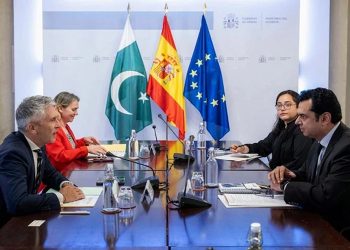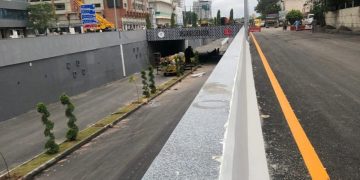There is no doubt that the greatest challenge to Prime Minister Imran Khan’s government has been the Pakistan Democratic Movement (PDM), an eleven-party alliance of political parties hell bent on ousting the PTI government at any cost. The formation and motives of PDM has intrigued political analysts as it involves shades of different political ideologies with a single agenda to take out Imran Khan.
The prime minister has dismissed the PDM as an inconvenient alliance of looters determined to protect their corruption and ill-gotten wealth. It has been termed an alliance of strange bedfellows with nothing in common and the only motive to dislodge the government and escape accountability. What led to the formation of the PDM and whose brainchild was it? It is certainly unusual to see puritanical parties like JUI-F and the secular-minded PPP with the centre-right PML-N all on the same page crying foul that the present government is engineered and must go.
The history of Pakistan shows that creation of political alliances is nothing new in the country. If we borrow a leaf from history, we may look at Pakistan National Alliance, an alliance of nine political and religious parties formed in 1977 to oust Prime Minister Zulfikar Ali Bhutto. These nine parties agreed to work as a single bloc despite comprising of secular, communist, socialist, conservative and Islamic forces. The protests went on for two years until General Zia took over in 1979 and ruled with an iron for the next decade. Under General Zia, all the opponents were crushed or eliminated except the Islamic parties who stood up for ‘Nizam-e-Mustafa’ but sided with the military dictator. The alliance eventually split after General Zia overthrew Bhutto until the democratic forces rejoined hands years later.
Are there any parallels between the PDM and the National Alliance? The PDM insists it wants to oust the government through peaceful, democratic means and uphold the constitution. It has never been answered whether the National Alliance had similar motives except for the anti-Bhutto narrative. Bhutto was certainly a populist leader who had drafted a new constitution, lifted the morale of the armed forces after the Dhaka debacle and contrary to popular perception helped rebound the economy although it could not withstand the 1973 oil crisis which created a new economic crisis.
Imran Khan also faces a battered economy which has been plunged due to the coronavirus pandemic, exports are stagnant and food inflation cannot be contained. This has given fodder to the PDM to use the negative response and claim the incompetency of the government. But what the PDM lacks is the enthusiasm on the streets. It certainly doesn’t have disgruntled middle class, traders and white-collar workers and the resentment against the regime is confined to the political class.
Another page in our history goes back to 1983 when a nationwide agitation began against General Zia and become a civil war of sorts in Sindh before it was crushed. The Movement for the Restoration of Democracy (MRD) was formed in 1981. It is till date regarded as the largest pro-democracy movement in the world. The alliance launched a struggle against the military regime and in the first few weeks, 1,999 people were arrested, 189 killed and 126 were injured. Military force and repression was used against the agitators but the political pressure compelled General Zia to hold elections albeit on a non-partisan basis. The MRD united the masses and prominent leaders and thousands of activists were jailed. It was dissolved in 1988 after Gen Zia’s aircraft crash.
There is no comparison between the PDM and MRD as it has launched the agitation which we witnessed in those days. Neither can Gen Zia’s dictatorship be compared to the current government.
The problem with PDM leaders is that they have seemingly forgotten the principles of holding a movement or manipulating the perception to their advantage. If the PDM wants a real struggle, then it need to raise the stakes even higher for an all-out confrontation.
The history of Pakistan has many other alliances which emerged soon after partition against the Muslim League, formation of Combined Opposition Parties in 1964 which fielded Fatima Jinnah against General Ayub, Nawabzada Nasrullah Khan’s Democratic Action Committee, Islami Jamhoori Ittehad (IJI) against the PPP, and the Alliance for Restoration of Democracy against General Musharraf. We even witnessed the All Parties Democratic Movement (APDM), an alliance of 32 opposition parties opposed to Gen Musharraf’s rule, some of which including the PTI boycotted the 2008 general elections.
Where does the PDM stand in the list of political alliances? The alliance is faltering amid a rift over the failure to have a coherent strategy against the government. Political alliances have forced dictators to abdicate power and pave way for democracy. The PDM could be a repeat of the National Alliance which was detrimental to democratic ethos and had a devastating effect on society. Neither does the PDM wants to launch an agitation like the MRD which meets a strong response. The political history suggests that political alliances are justified as long as the democratic process is not derailed. The political forces must learn from history as they will surely have their place in it.



























